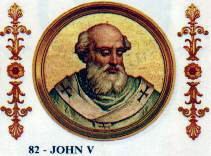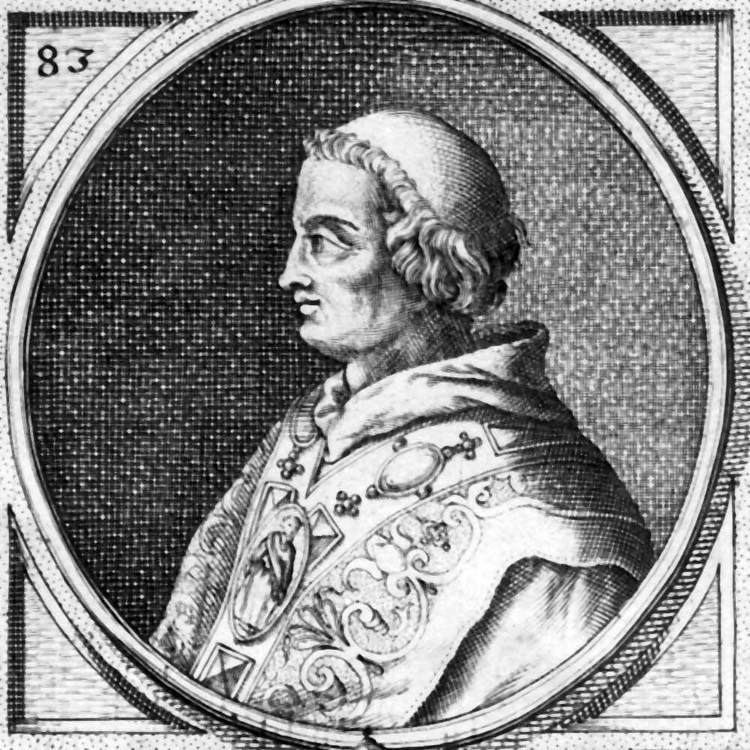Papacy began 23 July 685 Papacy ended 2 August 686 | Birth name ??? Term ended August 2, 686 AD Name Pope V | |
 | ||
Pope John V (Latin: Ioannes V; d. August 2, 686) was Pope from consecration 23 July 685 to his death in 686. He was the first pope of the Byzantine Papacy allowed to be consecrated by the Byzantine Emperor without prior consent, and the first in a line of ten consecutive popes of Eastern origin. His papacy was marked by reconciliation between the city of Rome and the Empire.
Contents

Early life
John was a Syrian by birth, born in the province of Antioch.
On account of his knowledge of Greek, he was named papal legate to the Third Council of Constantinople in 680.
Election
John V was the first pope of the Byzantine Papacy consecrated without the direct approval of the Byzantine Emperor. Constantine IV had done away with the requirement during the reign of Pope Benedict II, John V's predecessor, providing that "the one elected to the Apostolic See may be ordained pontiff from that moment and without delay". In a return to the "ancient practice", John V was selected "by the general population" of Rome. John was elected in July 685. Constantine IV doubtlessly trusted that the population and clergy of Rome had been sufficiently Easternized, and indeed the next ten pontiffs were of Eastern descent.
Papacy
John V's papacy saw a continuation of improving relations with Byzantium. The Emperor greatly reduced taxes on the papal patrimonies of Sicily and Calabria and abolished other taxes, such as a surtax on grain that had been paid only with difficulty in recent years. A letter from Justinian II assured John V that a "synod of high-ranking civil and ecclesiastical officials", including the apocrisiarius and the Byzantine military, had read and thereafter sealed the text of the Third Council of Constantinople, to prevent any alteration to its canons. The letter was addressed to "John pope of the city of Rome", written while the Emperor believed the pope to still be alive, but received by Pope Conon.
Like his immediate predecessors, John V was unusually generous towards the dioconies of Rome, distributing 1,900 solidi to "all the clergy, the monastic diaconies, and the mansionarii" for the poor.
Death
After a pontificate of little more than a year, John V died in bed and was succeeded by Pope Conon. John V's death in August 686 gave rise to a "heated debate over his successor", with the clergy favoring an archpriest Petros, and the army supporting another priest named Theodoros. The faction of the clergy gathered outside the Constantinian basilica and the faction of the military met in the Church of St. Stephen. Shuttle diplomacy proved futile and eventually the clergy elected Conon, a Greco-Sicilian, instead of their original candidate.
John V was buried among the papal tombs in Old St. Peter's Basilica. His inscription praised him for combating Monothelitism at the Third Council of Constantinople "with the titles of the faith, keeping such vigilance, you united the minds so that the inimical wolf mixing in might not seize the sheep, or the more powerful crush those below". John V's tomb was destroyed by the Saracen Sack of Saint Peter in 846, centuries before those around it were destroyed by the demolition of Old St. Peter's Basilica in the 16th and 17th centuries.
